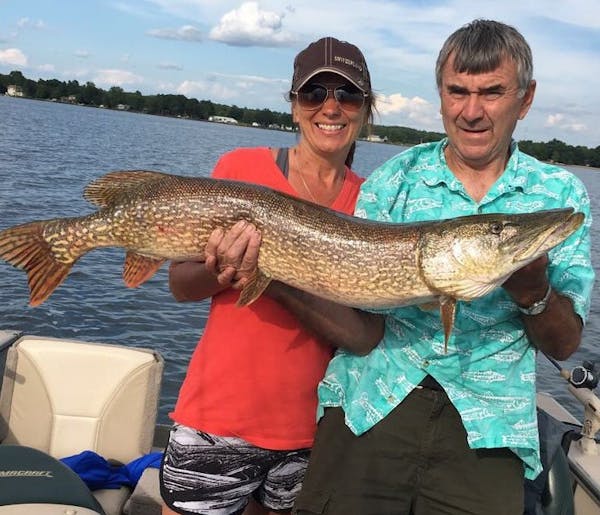Mille Lacs walleye fishing reopened last weekend with a light turnout of anglers despite very fishable weather and the continuation of a hot bite, merchants around the big lake said.
The Department of Natural Resources (DNR) closed the lake to walleye fishing for 35 days and banned the use of live bait during that time to conserve the fish and halt an overrun on the state's 2017 harvest allotment set in conjunction with eight American Indian Chippewa bands. The fishery reopened at 11:59 p.m. Thursday and is set to close again — for the season — at the end of Labor Day.
"It was definitely underwhelming,'' Twin Pines Resort co-owner Linda Eno said of the turnout.
"It was not the traffic we hoped for. I was a little surprised," said Jim Hammarstedt of Reed's Mille Lacs Outpost in Onamia, a fishing tackle supplier.
Kathy Lundeen of Lundeen's Tackle Castle and Guide Service said the "reopener" generated only a slight increase in customer traffic.
"The people who went out found some fish," she said. "The fish didn't stop biting."
Parking spots were easy to find throughout the weekend at public boat landings around the 86 miles of shoreline, veteran fishing guide Jeff Lane said. He expects a bigger turnout for the upcoming weekend because big walleyes are being caught with ease.
Lane said he was guiding a group of bass anglers who traveled to Mille Lacs from Maryland. Especially during mornings and evenings, the group incidentally caught "lots of walleyes," larger than 25 inches.
"Once the live bait ban was lifted, I figured there would be a lot more walleye boats on the lake than there were," Lane said.
Brad Parsons, DNR fisheries supervisor for the Mille Lacs region, said the agency hasn't changed its plan to keep walleye fishing alive through Labor Day. All walleye fishing on Mille Lacs this season is restricted to catch-and-release. But some fish die after being returned to the water and estimates of that so-called "hooking mortality'' count against the state's harvest allotment.
State anglers reached their quota of 44,800 pound of walleyes caught and released in Mille Lacs in early July. To keep the season open, the DNR is dipping into a conservation reserve account that must be paid back over the next three years.
Despite high catch rates for Mille Lacs walleyes, scientists continue to be alarmed over a decrease by half or more in the lake's walleye population. Large walleyes don't have enough to eat, the DNR has said, and the vast majority of baby walleyes don't survive to their third autumn in the lake.
Fall surveys of walleye abundance in Mille Lacs are critical to management decisions. Parsons said this year's netting surveys are scheduled for the last two weeks of September. Results should be available by late October.
